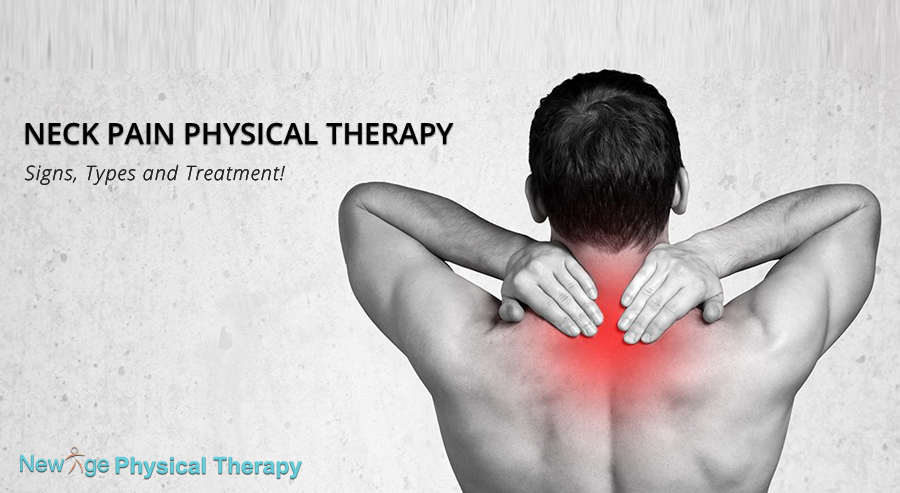Signs, Types and Treatment of Physical Therapy for Neck Pain
The neck bears a considerable amount of weight; as much as one-seventh of the body’s weight! It’s one of the most unrestrained body parts but pain in this area can limit our range severely. Many people try to alleviate their symptoms by taking pain killers; however, this does not stop the pain from returning. Instead, the best solution is to locate and treat the underlying problem and physical therapy is great in doing just that.
Signs and Symptoms
Neck pain can affect any age group and it ranges from a dull ache to a sharp, intense pain. In more severe cases, it can travel to the arms, shoulders, upper back, chest, and head. In fact, the most common complaint is pain occurring in the form of a headache.
Neck problems can also prevent movement because of muscle stiffness, tenderness, and tension. This can limit our participation in activities of daily living such as looking down to read a book and turning our head to look behind our shoulders.
Types of Neck Pain
The source of most neck pain is strained neck muscles. People can place stress onto the area with the most simplest of actions. Common ways that cause strains, sprains, or spasms include poor posture, looking down at your phone, carrying a heavy bag, and sleeping in an odd position.
Falling or whiplash is another way to cause the problem. For instance, in a car accident, your neck may go backward and then forward, in a whip like motion, a movement likely to harm the area. Other impact or force-related trauma can cause similar injuries.
If muscle knots, tension, or stiffness is left untreated, it can lead to chronic neck pain that lasts for three or more months. It’s capable of spreading to the following areas: shoulders, chest, upper back, and/or arms causing weakness, tingling, and/or numbness to develop.
Thus, it’s important to address neck pain in its early stages before it exacerbates and limit our mobility even more. Apart from physical, additional symptoms of chronic pain include fatigue, depression, and anxiety.
Treatment
Physical therapy treatment for neck pain may include:
- Applying ice, heat, and/or electrical stimulation
- Muscle energy technique
- Joint mobilization and soft tissue massage
- Cervical traction (light stretching of the neck)
- Postural corrections as well as ergonomics consultation
- Strength and stretching exercises
- Neural mobilization
Neck Stretches: It’s optimal to include stretching exercises in the treatment plan to increase range of motion and flexibility of the cervical joints. It can also relieve the stiffness that accompanies the pain.
Neck Strengthening: Strengthening exercises can improve posture, which in turn decreases recurrent flare-ups of pain.
Aerobic Conditioning: Aerobic exercises can benefit blood flow to the neck and upper back muscles and soft tissues, thus, loosening the muscles and increasing range of motion. Also, after 30 minutes of cardio, our body naturally produces endorphins, a “painkiller” that can help relieve symptoms.
Read more:



